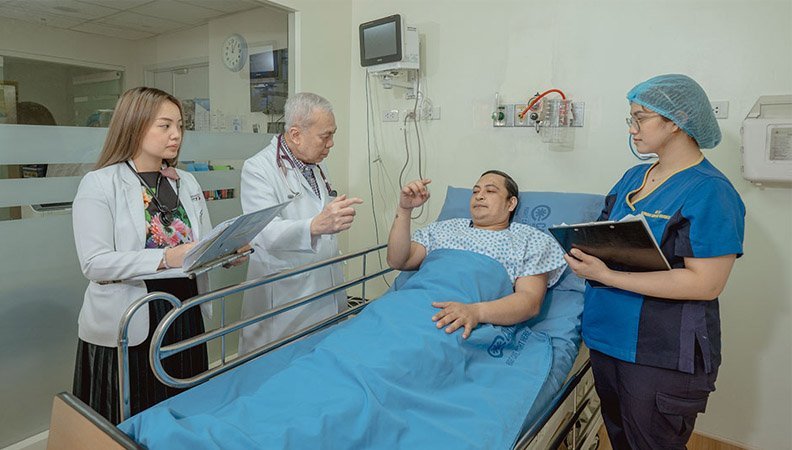Open Hours
Nemo enim ipsam voluptatem quia voluptas sit aspernatur aut odit.
- Mon-Fri: 9 AM – 6 PM
- Saturday: 9 AM – 4 PM
- Sunday: Closed
Contact Us
For Consultation
Peripheral Vascular Interventions

Peripheral vascular intervention is a specialized medical field that uses minimally invasive, catheter-based procedures to treat blood vessel diseases outside the heart and brain. These advanced techniques allow our interventional radiologists to diagnose and treat conditions affecting arteries and veins in the arms, legs, kidneys, and other organs without traditional open surgery.
Using real-time imaging guidance such as fluoroscopy and ultrasound, our specialists navigate small catheters and specialized devices through blood vessels to reach the affected area. This approach provides a safer, more precise alternative to conventional surgical methods for treating various vascular conditions including blockages, narrowings, and abnormal connections between blood vessels.
Benefits of Peripheral Vascular Intervention
Minimally Invasive Procedure Small puncture sites instead of large surgical incisions, resulting in minimal scarring and reduced tissue trauma.
Faster Recovery and Healing Most patients can return to normal activities within 24-48 hours compared to weeks of recovery after traditional surgery.
Lower Risk of Complications Significantly reduced risk of infection, bleeding, and other surgical complications compared to open vascular surgery.
Immediate Symptom Relief Many procedures provide instant improvement in blood flow, offering immediate relief from pain and other symptoms.
Outpatient Treatment Most procedures can be performed as day cases, allowing patients to return home the same day.
Preserved Limb Function Effective treatment of vascular conditions can prevent limb loss and restore normal function.
Local Anesthesia Most procedures require only local anesthesia, avoiding risks associated with general anesthesia.
Cost-Effective Solution Less expensive than traditional surgery with shorter hospital stays and faster return to work.
Peripheral Vascular Intervention Procedures
Peripheral Artery Disease (PAD) Treatments
- Peripheral Angioplasty
- Peripheral Stent Placement
- Atherectomy (Plaque Removal)
- Drug-Coated Balloon Angioplasty
Dialysis Access Interventions
- Arteriovenous Fistula Creation
- AV Graft Placement
- Dialysis Access Maintenance
- Thrombectomy for Blocked Access
Venous Interventions
- Deep Vein Thrombosis (DVT) Treatment
- Inferior Vena Cava (IVC) Filter Placement
- Varicose Vein Treatment
- Venous Stenting
Renal Vascular Interventions
- Renal Artery Angioplasty
- Renal Artery Stenting
- Renal Vein Interventions
Aortic Interventions
- Abdominal Aortic Aneurysm Repair (EVAR)
- Thoracic Aortic Aneurysm Repair (TEVAR)
- Aortic Stent Grafting
Embolization Procedures
- Uterine Fibroid Embolization
- Prostate Artery Embolization
- Gastrointestinal Bleeding Control
- Trauma-Related Bleeding Control
Thrombolysis Procedures
- Catheter-Directed Thrombolysis
- Mechanical Thrombectomy
- Pharmacomechanical Thrombolysis
Vascular Malformation Treatments
- Arteriovenous Malformation Embolization
- Peripheral Aneurysm Repair
- Pseudoaneurysm Treatment
Faster Recovery and Healing Most patients can return to normal activities within 24-48 hours compared to weeks of recovery after traditional surgery.
Lower Risk of Complications Significantly reduced risk of infection, bleeding, and other surgical complications compared to open vascular surgery.
Immediate Symptom Relief Many procedures provide instant improvement in blood flow, offering immediate relief from pain and other symptoms.
Outpatient Treatment Most procedures can be performed as day cases, allowing patients to return home the same day.
Preserved Limb Function Effective treatment of vascular conditions can prevent limb loss and restore normal function.
Local Anesthesia Most procedures require only local anesthesia, avoiding risks associated with general anesthesia.
Cost-Effective Solution Less expensive than traditional surgery with shorter hospital stays and faster return to work.
Post Procedures
Post treatment, Dr Imtiaz Ahmad and his team manage a thorough follow up with the patient for up to 6-12 months, especially in cases where restoring fertility had also been an aim. In the hospital, the medical staff is obligated to look after the health of the patient and ensure that they attain a speedy recovery. Most patients are discharged after only a few hours of the procedure, while some may be admitted overnight for further checkups. However, the recovery time is generally very short, especially after the fluoroscopic guided nerve block ensures that the patient is in comfort and pain free for 18-20 hours.
Get the look of your dream with us!
Get Consultation
Have questions?
Get in touch!
Open Hours
Nemo enim ipsam voluptatem quia voluptas sit aspernatur aut odit.
- Mon-Fri: 9 AM – 6 PM
- Saturday: 9 AM – 4 PM
- Sunday: Closed
